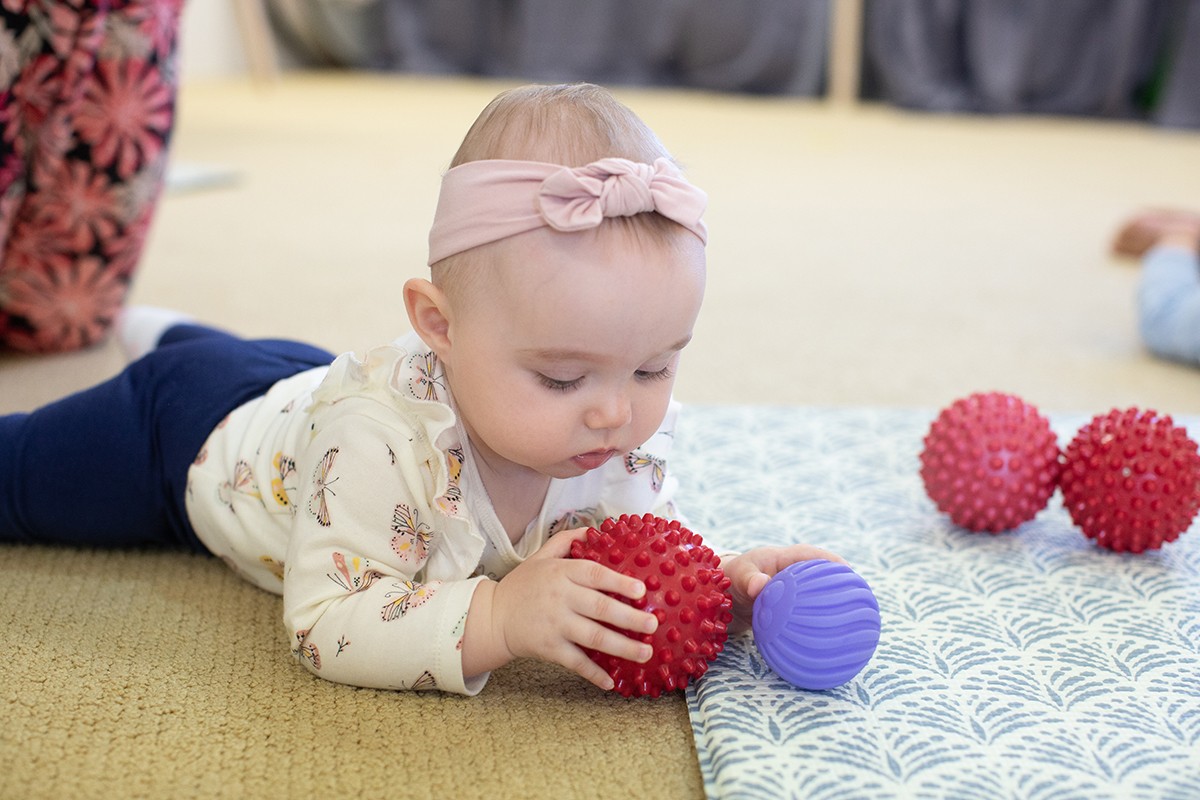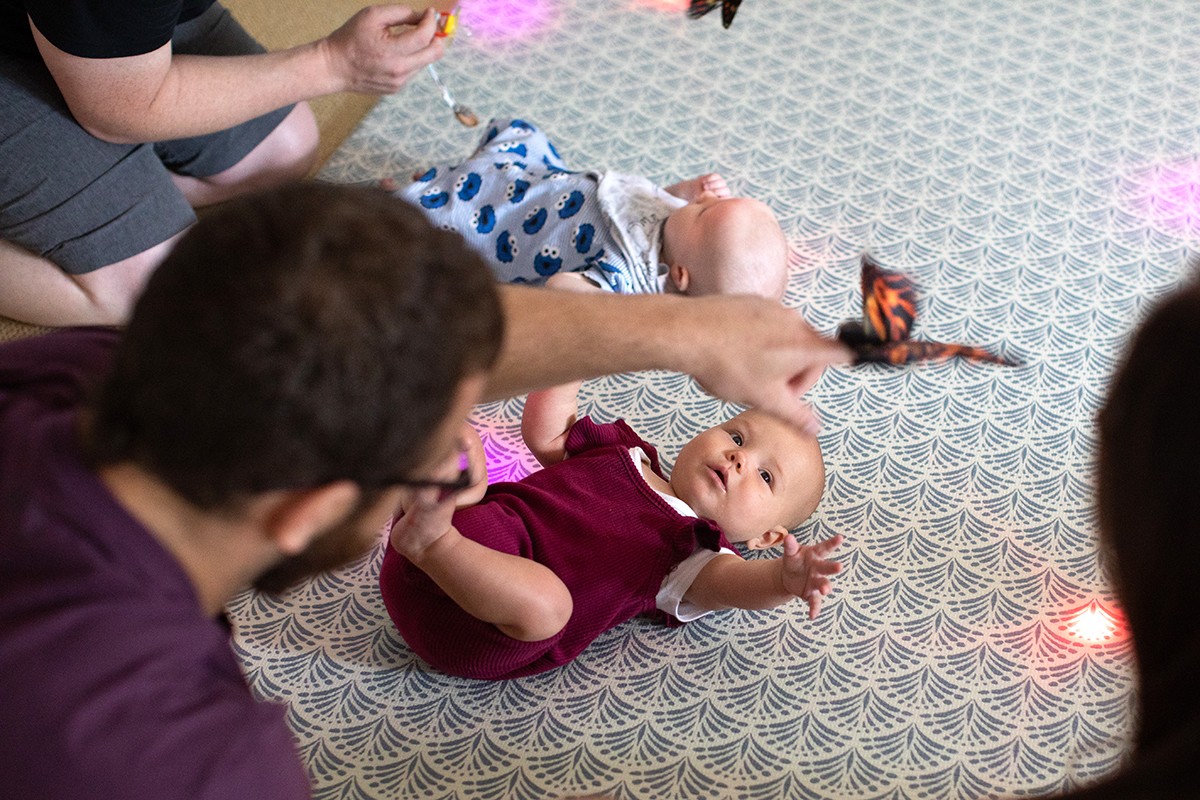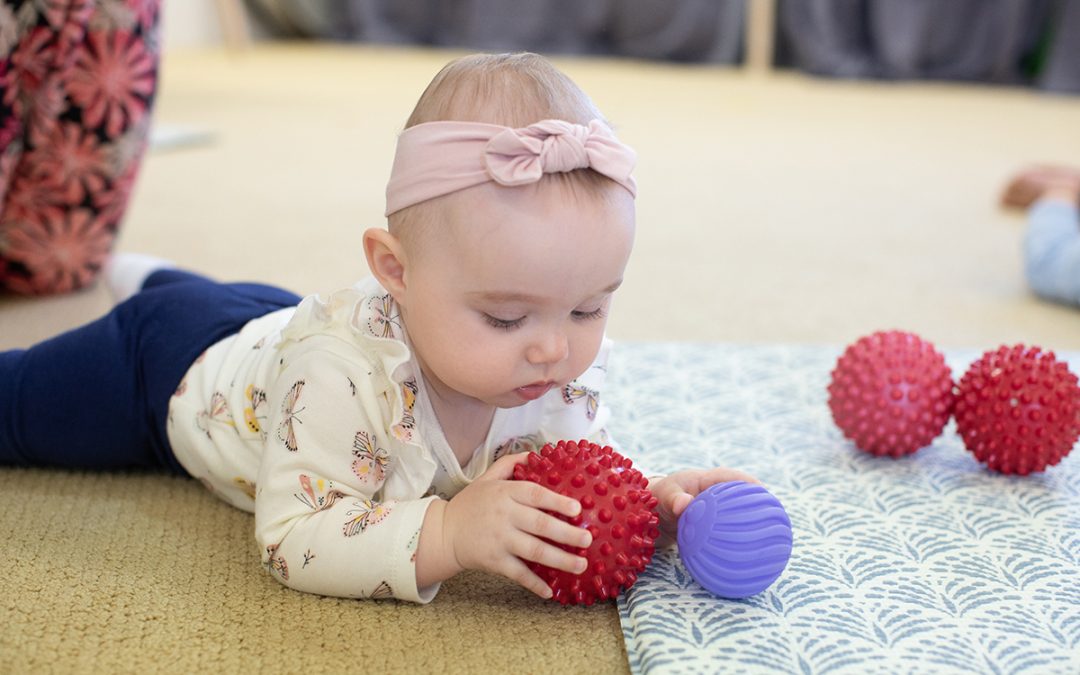
It seems like every time you turn around some well-meaning person pushes us to get bub on their tummy. Why is this so important? And what if your bub HATES being on their tummy?
Under 6 months, our brain first develops all the involuntary or automatic movements that make all other movement possible. The Hind (or base part) of your brain, is responsible for movement we don’t think about, including breathing. These include things like following an object with our eyes, turning our head to locate a sound, using our core muscles (tummy and back muscles) to tighten so we can reach for objects as well as using one arm/leg to hold ourselves still (anchor) so the other can reach or extend to crawl.
Why does it matter if these movements aren’t automatic?
If we need to THINK about doing these things, our brain isn’t free to LEARN about the information that action is giving us. For example, if we need to THINK about how to make our eyes track a line of writing, our brain isn’t free to LEARN what we are reading. If we need to THINK about following a teachers’ movement around the room, our brain isn’t free to LEARN what they are saying. The good news is, once we are aware of how important involuntary movements are, you are empowered to easily support your childs’ future development.
THE PLAN:
Firstly, put baby down.
Our culture takes bub from bed to bouncer to highchair to car seat to pram and back to bed again. Our core muscle strength develops through unsupported floor play. So, give your child plenty of uninterrupted time alone, on the floor. Add a few interesting objects and mat textures to lengthen floor play.
The big bonus for introducing independent floor play early is this will feel normal to your older baby who will give you a much-needed break by entertaining themselves for longer periods.
LET’S GET THINGS IN ORDER
There is an optimal order to your babys’ physical development. Each skill allows your bub to succeed at the next. This means missing out steps in the order of physical development can make things trickier later in the game. If your baby hates tummy time, fusses or flails their arms like an earthbound superman, it may simply mean they have missed back time.Back time comes BEFORE tummy time. Spending time on their back strengthens the muscles in the front of babys’ body.

If you lay on your back (go on) and reach your arms and legs outwards and upwards, then back into your body, you can feel your core muscles working hard. Inward movements flex or shorten the muscles and outward movements extend or lengthen the muscles. Lots of back time with interesting objects to reach hung over baby will literally entice them into hundreds of little tummy crunches and hip flexing moves every day. This is the exercise bub needs to enjoy tummy time.
THE PROGRESSION FROM TUMMY TIME TO CRAWLING
Rolling
Before baby can prop and reach in front of them, placing toys beside them will encourage the anchoring rolling that makes them strong enough to prop for long periods of tummy time and roll over to change position. It gently teaches us how to use gravity and the weight of our body to give momentum to the movement. The more time baby spends rolling, the stronger this automatic system will become.
Sitting and Commando Crawling
Your babys’ nervous system and strength starts at the top of the head and slowly goes down the body and then out to the extremities of the limbs. After rolling, your baby will start to build the core strength to sit up first supported then unsupported. BEFORE your baby can crawl on all fours, the arms need to be strong enough to not only bear babys’ weight but also to hold against the forward pressure of the legs pushing forward. So again, we see the incredible design in the order of development with commando crawling as an important movement to strengthen the arms. Commando crawling is crawling with the tummy still on the floor. Often, we feel like this isn’t “real” crawling. Commando crawling depends mostly on the arms and core muscles to move.
You might notice your baby goes backwards BEFORE they go forward. That is because the arms are at first stronger than the legs. This can be super frustrating as they move away from what they want.

Crawling
Eventually their struggle will engage their legs and the feet find a grip. This is when you see baby rocking forward and backwards for a while. It’s amazing that this action is designed to strengthen the leg muscles. This push and pull like a gym exercise, is building up the strength and responsiveness of the legs, until finally they are stronger than the arms and push forward. And baby face plants. And then learns to reach forward to stop the face planting and finds…they are crawling.
This building block style of development continues throughout life. Crawling collects all the data from the senses (eyes, ears, hands and skin, mouth, and nose) that tell them how gravity works and where they are in space. It is the exercise baby needs to develop shoulder strength and achieve the cross lateral movement that builds connections in the brain for complex thought. These are both essential for all school age and adult movement and thought.

